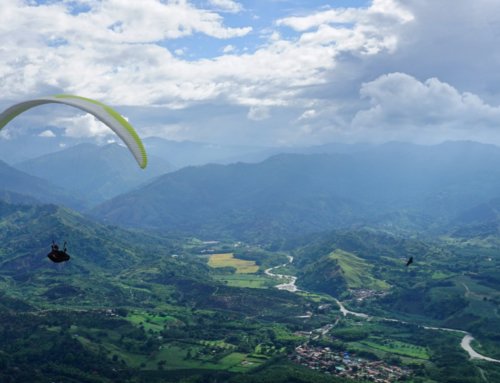Last week on a short cross country flight, I was heading away from my climb towards the edge of the cloud when I hit very strong lift that took me by surprise and into the cloud briefly before emerging into clear air. It prompted me to share some personal reflections on being prepared to respond to the unexpected: what might we do to best keep ourselves safe?
A couple of years back I did an SIV course. My motivation was to develop my piloting skills and encounter some more extreme situations under instruction rather than on my own when I wasn’t expecting. We covered asymmetric and frontal collapses, spins and stalls, things that most of us (other than acro pilots) hope not to experience too often. Landing after each one of these runs was an enormous relief to have got through doing what felt to be so counter-intuitive – trying to prevent my glider from flying properly. I also discovered that I wasn’t one of the most natural flyers in these artificial exercises: at the beginning of each flight I would be concentrating so hard on doing what I’d been told that sometimes I was slow to react to what followed.
Then on the next run the unexpected happened. I got locked into a spiral dive. The initiation stage was standard: weight shift followed by a firm brake input. As the turn steepened and became a proper spiral, the G force felt immense, just over 5g according to my Skytraxx. I released the inside brake, and was completely overwhelmed by the intensity of the experience – the extreme force pinning my body down into the harness, pressing my head down on my neck, the speed, the straight vertically down attitude – like nothing I’d ever felt before. I could hear my instructor nattering on the radio something about the inside brake, with increasing anxiety, as the pitch of his voice rose swiftly. But at that precise moment in time I had no sense of danger at all, despite hurtling downwards towards the lake at 22m/s. I was literally overwhelmed.
The instructor’s voice reminded me that I’d been briefed to apply outside brake, and eventually as I increased the brake pressure, the spiral eased and then came out. Looking back on the video, I’ve realised that as I went into the spiral I’d failed to centralise my weight. My wing was a mid-B, and to achieve that certification, a wing must exit a developed spiral without pilot input. Probably my position in the harness was what caught both me and my instructor by surprise.
A second realisation after the event was how close I’d come to having a serious, if not fatal, accident. Studying the tracklog (see the summary chart showing my height and decent rate), I recovered from the spiral 126m above the lake, giving a margin of around 6 seconds or two more rotations before impact. You can see from the Google Earth visualisation of the flight that my instructor could see the narrowness of the margin, but I had no sense of imminent danger at the time.
You may have seen reports recently of deaths involving spiral dives. Reportedly a paramotor spiralled into the ground without any sign of attempted recovery. A very experienced paraglider pilot spiralled into a lake. Whilst investigation reports have yet to be published, it’s clear that this is a rapid decent manoeuvre with risks associated.
Our individual tolerance to withstand high G forces is variable. Possible symptoms include disorientation, confusion, loss of vision and unconsciousness. I have undertaken some training on a G force machine which equipped me with preparation techniques to better withstand the forces (tensing your leg muscles to improve the circulation to the head, panting to increase the oxygenation of the blood). I know from the training that whilst I can withstand 5g, at 6g my vision begins to grey out. What I also know is that now having experienced high G repeatedly, I’m now much less likely to experience that same sense of being completely overwhelmed as I was the first time it happened.
Which brings me back to where I started: gaining experience of extremes in relative safety when under instruction must equip us better to handle the unexpected and keep us out of harm’s way. Practicing our rapid decent techniques will keep them familiar and ensure we can deploy them without them adding to any drama that might have already enfolded us.
Practicing finding your reserve handle
We’re all told to practice reaching for our reserve handle so we can quickly find it should the need arise. However, another realisation from having done some G force training is that reaching your reserve handle may be much harder under higher G, such as in an autorotation. Apart from any general disorientation caused by the increased G force, it also affects the body’s ability to judge where your arm is, and you may reach for the reserve handle in completely the wrong place.
There are two tactics to address this, both of which can be easily practiced:
- look for the handle rather than assuming you know where to reach for it, because under high G it will feel as if it’s in a different place.
- find another physical reference that you can use – the handle is below my hip joint/hip bone/thigh – and practice by hitting yourself (gently!) so you know where on your body you should feel your arm when it’s in the right place.
If you to chat anything through, we’re always happy to offer help and advice over the phone (01433 627195) or by email (info@aerofix.com).

